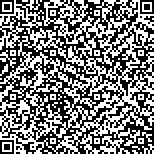下载中心
优秀审稿专家
优秀论文
相关链接
首页 > , Vol. , Issue () : -
摘要

月球极区因其特殊的地理位置与地形特征,太阳高度角较低,光照不充分,存在多处长期缺乏直接光照的永久阴影区。现有的影像数据阴影范围过大,导致形貌表现不完全,表现效果较差;若从高程数据出发,直接表现月球极区形貌,则会出现色彩与光影效果不自然、缺乏地形细节等问题。为了更好地开展月球极区的科学研究,行星制图中需要实现一套全面、高效的月球极区形貌可视化制图方法。本文结合高精度激光测高数据,通过晕渲可视化的方法制作晕渲地图,有效地表现月球极区的撞击坑、坑链、月溪等地貌,具有直观、详细、全面的特点。同时,在晕渲可视化地图的基础上进一步处理,如叠加永久阴影区要素,可得到更为清晰明了的专题地图。采用符合人类地理空间认知的月球极区可视化方法,将有助于月球极区科学问题的研究交流以及月球极区探测任务的开展。
Due to its special geographic location and topographic features, the lunar polar regions have low solar altitude angles and insufficient illuminations, and there are a number of permanently shadowed regions (PSR) that lack direct solar illumination all the time. These sites may contain large amounts of water ice and are therefore of both scientific importance and utilization. We often use visible-band imagery to visualize the topography of the lunar mid- and low-latitude regions, but this method is poorly effective in the lunar polar regions. Because the shadow range of the existing image data is too large, which leads to incomplete topographic representation and poor human understandings. If the planetary topography of the lunar polar region is directly represented from the elevation data, problems such as unnatural color and light effects and lack of topographic details will occur. Human's intuitive perceptions of the lunar surface mainly come from naked-eye optical observation, telescope optical photography, and remote sensing images from orbiting satellites, which largely shape our geospatial knowledge of the lunar landscape. Migrating these mature geospatial cognitions of the Moon to the lunar polar regions can effectively reduce the cost of understanding the lunar morphology. Therefore, in order to better carry out the scientific exploration on the lunar polar regions, a set of comprehensive, efficient, and human-cognitive-habit-suitable visualization mapping method of the lunar polar regions is needed. In this paper, we combine high-precision laser altimetry data with shading visualization method to create illumination maps, which effectively represent the impact craters, crater chains, rilles and other landforms in the lunar polar regions, and have the characteristics of intuition, detail and comprehensiveness. When visualization operation is carried out, the undulation of complex planetary landforms such as impact craters is comprehensively considered, and the topography is appropriately exaggerated, so that the absolute and relative elevations of the terrain can be reasonably expressed in the shading map. Such a planetary topographic map has a strong sense of three-dimensionality in the visual sense with clear light-shadow relationship, and the elevation expression has a better display effect even in the polar regions, without losing the details of the terrain, which can realize a more satisfactory effect of displaying the terrain features. In this paper, the large-scale topographic maps and local topographic details of the lunar polar regions are created by this method and compared with the corresponding remote sensing images. Moreover, further processes overlaying the permanently shadowed regions on the corresponding shading map can obtain a clearer thematic map. Orthorectified aerial view maps based on grayscale coloring of the elevation not only restores the real planetary topography, but also expresses the relationship between its absolute elevations and its relative height. Enhanced visualization of the lunar polar region aligns with human geospatial cognitions and can depict the topography of the lunar surface objectively and realistically, also this enhanced visualization strengthen the suitable geospatial planetary cognition of map users in accordance with human intentions and minds, which achieve better display effects of large-scale topography and small-scale terrain details. Such topographic shading maps are conducive to providing supports for landing site selection, rover path planning and exploration result display in the lunar polar regions.

